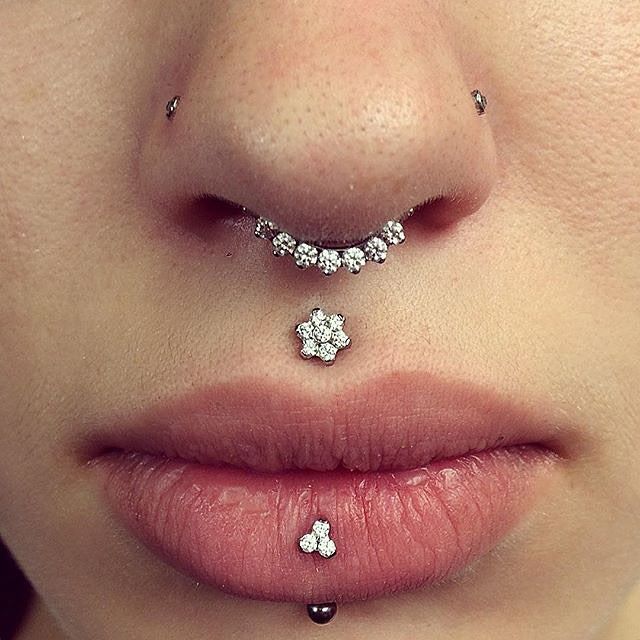Body adornment has only recently become a subject of serious scholarly research by archaeologists, who have been hampered in studying body piercing by a sparsity of primary sources. Early records rarely discussed the use of piercings or their meaning, and while jewellery is common among grave goods, the deterioration of the flesh that it once adorned makes it difficult to discern how the jewellery may have been used. Also, the modern record has been vitiated with the 20th-century inventions of piercing enthusiast Doug Malloy. In the 1960s and 1970s, Malloy marketed contemporary body piercing by giving it the patina of history. His pamphlet Body & Genital Piercing in Brief included such commonly reproduced urban legends as the notion that Prince Albert invented the piercing that shares his name in order to diminish the appearance of his large penis in tight trousers, and that Roman centurions attached their capes to nipple piercings. Some of Malloy’s myths are reprinted as fact in subsequently published histories of piercing.
Piercings may have only become widely popular in mainstream culture in recent years, but the practice of body piercing is far from new. Piercing dates back to Bible times and earlier. Read on to find out when specific types of piercings were first recorded and how their popularity has evolved in years since.
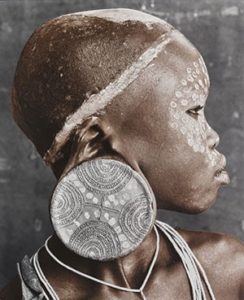

Ear Piercing
Ear piercing has been practiced all over the world since ancient times. There is considerable written and archaeological evidence of the practice. Mummified bodies with pierced ears have been discovered, including the oldest mummified body discovered to date, the 5,300-year-old Ötzi the Iceman, which was found in a glacier in Italy. This mummy had an ear piercing 7–11 mm diameter. The oldest earrings found in a grave date to 2500 BCE. These were located in the Sumerian city of Ur, home of the Biblical patriarch Abraham. Earrings are mentioned in the Bible. In Genesis 35:4, Jacob buries the earrings worn by members of his household along with their idols. In Exodus 32, Aaron makes the golden calf from melted earrings. Deuteronomy 15:12–17 dictates ear piercing for a slave who chooses not to be freed. Earrings are also referenced in connection to the Hindu goddess Lakshmi in the Vedas. Earrings for pierced ears were found in a grave in the Ukok region between Russia and China dated between 400 and 300 BCE.





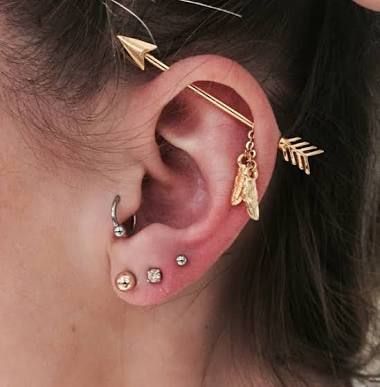

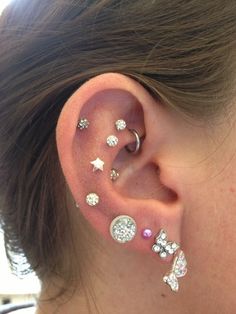
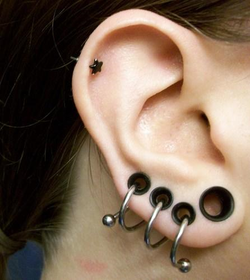
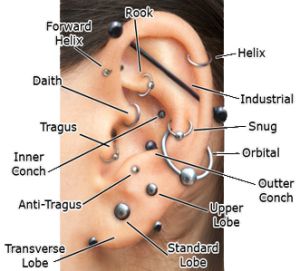
Eyebrow Piercing
Body piercing has been performed in many cultures for millennia, usually as part of a rite of passage or to identify a person as courageous, strong, or worthy. Eyebrow piercing, however, has a short history. It was introduced by the punk subculture in the 1970s as a fashion statement.
An eyebrow piercing is a vertical surface piercing, wherein a twelve to eighteen gauge cannula needle is inserted through the bottom of the eyebrow and exits through the top of the eyebrow to permit insertion of jewelry. Those performing the piercing may use a Pennington clamp to better guide the needle through the skin. A curved barbell is the most common jewelry inserted post-piercing. A piercing of underneath the eye is known as an anti-eyebrow piercing. A horizontal piercing of the eyebrow is known as a horizontal eyebrow piercing.
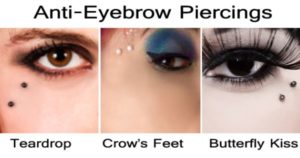

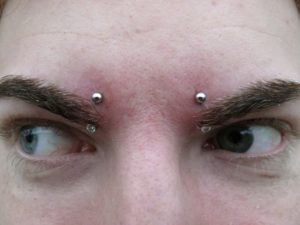
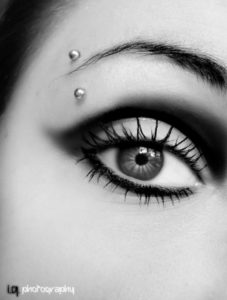
Nose Piercing
The nose is the face’s most prominent feature; as Loio Nardo Davinci once said, it sets the character for the whole face. It’s no surprise then that a nose piercing can positively accentuate one’s face, making nostril piercing in particular a very attractive type of piercing on many people. The history of nose piercing dates back to ancient times; it was first recorded in the Middle East approximately 4,000 years ago. It’s also mentioned in The Bible in Genesis 24:22, where it’s recorded that Abraham asked his oldest servant to find a wife for his son, Isaac. The servant found Rebekah, and one of the gifts he gave her was a “golden earring”. The original Hebrew word used was Shanf, which translates to “nose ring”. Nose Bones for Nose Piercings. The practice of nose piercing is still followed among the nomadic Berber and Beja tribes of Africa and the Bedouins of the Middle East. The size of the ring gifted denotes a family’s wealth. It’s given by a husband to his wife when they marry, and it represents financial security for her in the event that she and her husband are divorced.



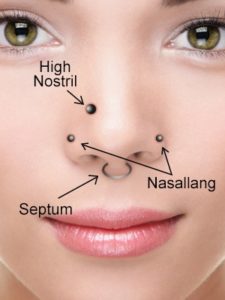
In the 16th century, nose piercing was bought to India from the Middle East by the Mughal emperors. In India, a stud (called a “Phul”) or a ring (i.e. “Nath”) is usually worn in the left nostril, although both nostrils are pierced in some areas. The reason the left nostril is more commonly pierced is due to that spot being associated with female reproductive organs in Ayurveda (i.e. Indian medicine); the piercing is supposed to make childbirth easier and lessen period pain. An Indian woman’s nose piercing is sometimes joined to her ear by a chain. In the west, nose piercing first appeared among the hippies who had traveled to India in the Late 1960s. In the 1970s, the practice of nose piercing was adopted by the Punk movement as a symbol of rebellion against conservative values. Conservative people–particularly parents and employers–still don’t react well to it, so consider any reactions that could negatively affect you or your career carefully before having your nose pierced.
Nowadays, nose piercing is gradually becoming more socially acceptable. Many celebrities have their noses pierced–for instance, Madonna, Lenny Kravitz, Sinead O’Connor, and Slash from Guns & Roses. More and more, you’ll see everyday people sporting little gem-topped nostril studs and fine hoops, too, including professionals in a variety of settings ranging from retail outlets to doctor’s offices.
Tongue Piercing
Tongue piercing was practiced in a ritual form by the ancient Aztecs, the Maya of Central America, and the Haida, Kwakiutul, and Tlinglit tribes of the American Northwest. The tongue was pierced to draw blood to propitiate the gods and to create an altered state of consciousness so that the priest or shaman could communicate with the gods.


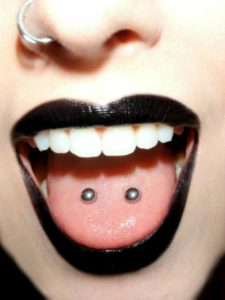
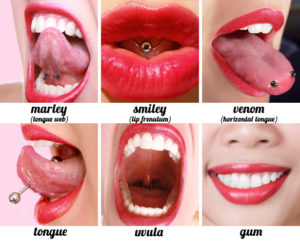
Tongue piercing is now one of the most popular piercings people get. It’s shocking, provocative and fantastic for oral sex (for both sexes), but at the same time, no one need know you have it. Janet Jackson, Keith Flint from Prodigy, Mel B. from the Spice Girls, and Malcolm Jamahl Warner from the Cosby show all sport pierced tongues.
Lip Piercing
Piercing lips so objects can be inserted in them is widely practiced throughout the world, although lip piercing history is richest in tribal cultures. Only two tribes pierce the lips with a ring: the Dogon tribe of Mali and the Nuba of Ethiopia. Among the Dogon, lip piercing has religious significance; they believe the world was created by their ancestor spirit “Noomi” weaving thread through her teeth, but instead of thread, out came speech. All the other lip piercing that is practiced around the world is done with labrets, which can be made from a pin of wood, ivory, metal, or even quartz crystals. Among the tribes of Central Africa and South America, the labret piercing is stretched to extremely large proportions, and large wooden or clay plates are inserted in place of labret pins over time.
Among the ancient Aztecs and Maya, labret piercing (i.e. “Tentetl” to the Aztecs) was reserved for male members of the higher castes, who wore beautiful labrets fashioned from pure gold to look like serpents, golden labrets with stones inset in them, and labret jewelry made of jade or obsidian. The Native Americans of the Pacific Northwest and the Inuit peoples of northern Canada and Alaska wore labrets fashioned from walrus ivory, abalone shell, bone, obsidian, and wood. The Makololo tribe of Malawi wear lip plates called Pelele in the upper lip. The African explorer Dr. Livingstone asked a chief the reason for this; in surprise, the chief answered “For beauty! They are the only beautiful things women have. Men have beards, women have none. What kind of person would she be without Pelele? She would not be a woman at all.”
“The plug of wood in the lips, which became little by little a disk, and then a real plaque, was in some manner a sign of possession of the husband of the Djinja woman. It is the man who is to marry her, and very often him alone who operates, transfixing the lips of the young girl with a blade of straw forms the first sign of the deformation to which she will be subject as an adult. It is in sum, a betrothal rite.
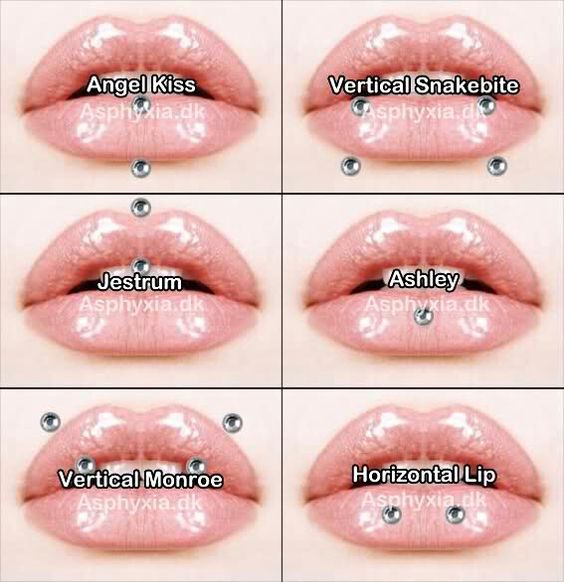

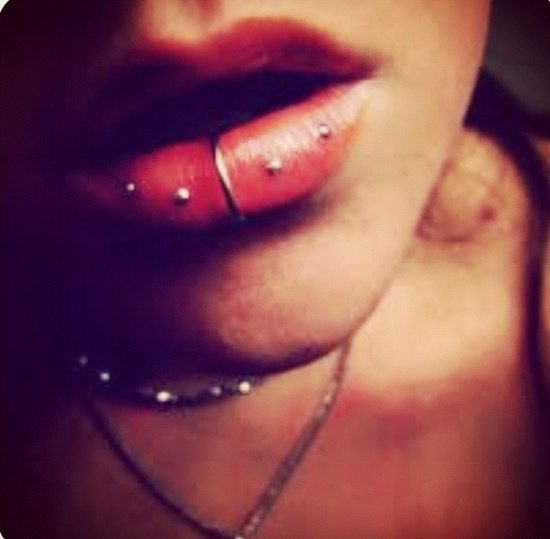

Navel Piercing
Navel piercing is a modern invention and has never been recorded in primitive cultures. However, the navel has long been recognized as an erogenous zone, because of the difference between men’s and women’s stomachs. Women’s stomachs differ from men’s in that they are more rounded in the lower part, are longer than men’s, have a greater distance between the navel and genitals, and are more deeply recessed than men’s. These features are often exaggerated by artists to make women appear more feminine in paintings. The invention of the Bikini in 1953 caused a big stir because the navel was seen as being sexually provocative due to its similarity to the female genitals. The Bikini revolutionized women’s lives. Along with the liberation of their clothes, their lives in general became more liberated. The process was completed when Madonna started the craze for showing off the midriff in the 1980s. The ability to flaunt their sexuality in public gave women more power and confidence in themselves.


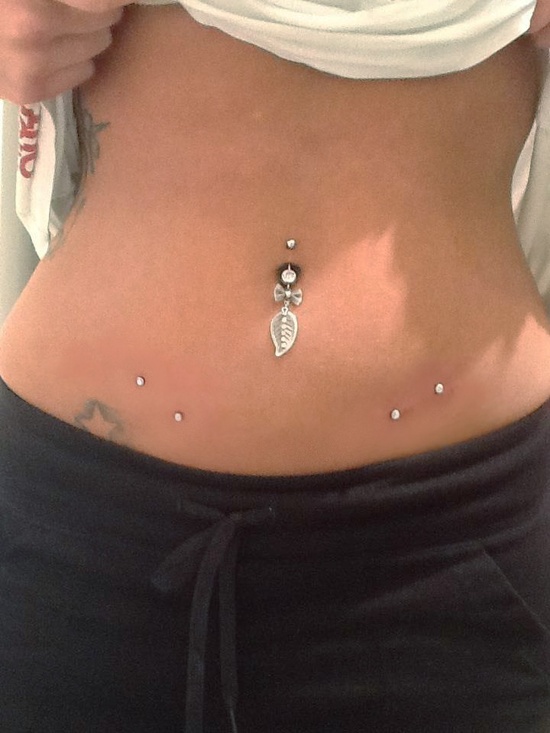
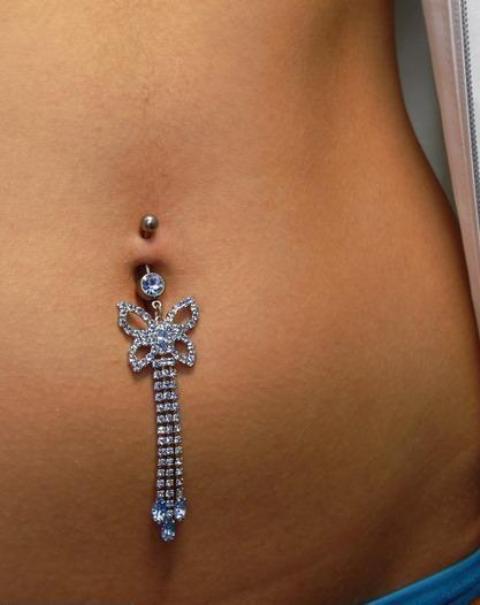
In September 1994, Suzy Menkes of the New York Times said, “It is easy to pinpoint the moment when body piercing went mainstream. Christy Turlington came out at a London Fashion show, and in the middle of her navel was a ring! The next day Naomi Campbell showed the world that anything Christy could do, so could she. A gold ring with a small pearl pierced her navel. And then at Isaac Mizrahi’s show the two came out together, navels bared and be-ringed: body piercing as a Supermodel totem.” Naomi Campbell said, “I like it, I think it’s fun!” Christy Turlington was quoted as saying, “I always thought it was a pretty feminine thing to do – and you can always take it out.” Years before Christy and Naomi’s fateful pierced-navel-baring runway walks, Madonna was quoted as saying, “I have the most perfect belly button – an inny. When I stick my finger in my belly button, I feel a nerve in the center of my body shoot up my spine” in a 1985 Time Magazine interview. So it was no surprise when Madonna got her navel pierced shortly after Naomi and Christy, followed closely by Cher and Janet Jackson. Now anybody can joins the ranks of celebrities and supermodels and have their belly buttons pierced, too–and so many have in the years since!
Nipple Piercing
At what point did nipple piercing work its way into body piercing history? It’s well known that Roman Centurions wore fitted leather armor breast plates that sometimes had rings placed where the nipples appeared to be, so that a cape slung over the shoulders could be attached to the rings. That practice led some people to say that those same soldiers had their actual nipples pierced, too, so that they could secure a cape even when not wearing their armor. However, anybody who has had their nipples pierced would tell you that this would be a very uncomfortable practice. So if it didn’t begin with Roman Centurions, what did start the practice of nipple piercing? Gold Segment Rings for Nipple Piercings” In the middle of the 14th century. Many women suddenly wore ‘such low necklines that you could see nearly half their breasts’, and among the upper classes in the same century, Queen Isabella of Bavaria introduced the ‘Garments of the grand neckline’, where the dress was open to the navel. This fashion eventually led to the application of rouge to freely-displayed nipples, those ‘little apples of paradise’, and to placing diamond studded rings or small caps on them, even to piercing them and passing gold chains through them decorated with diamonds.”
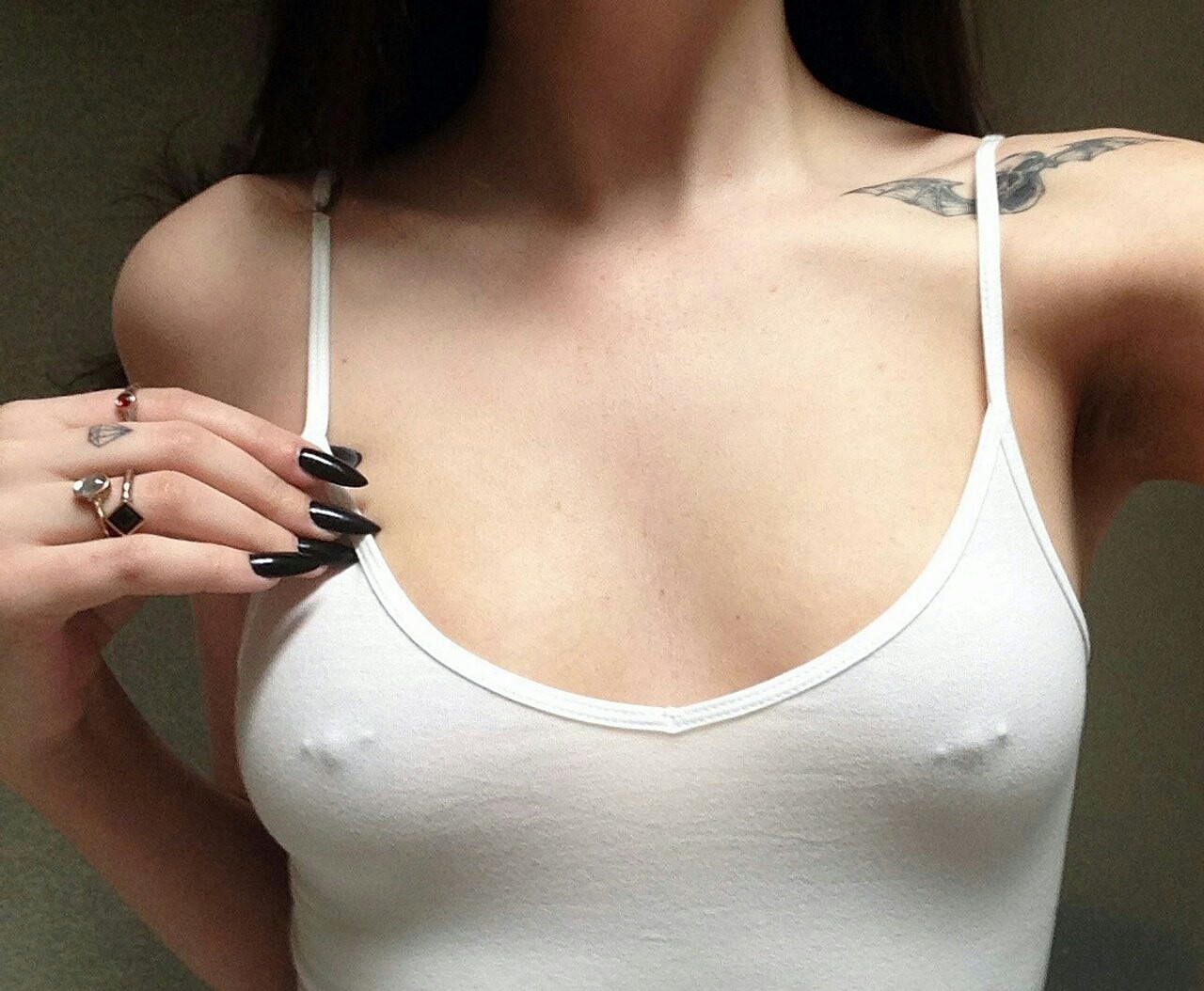
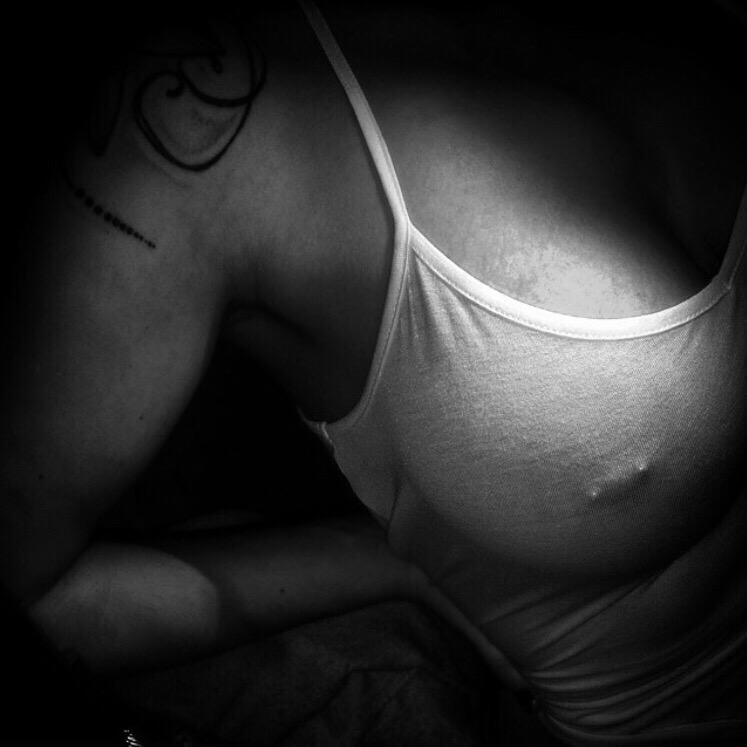
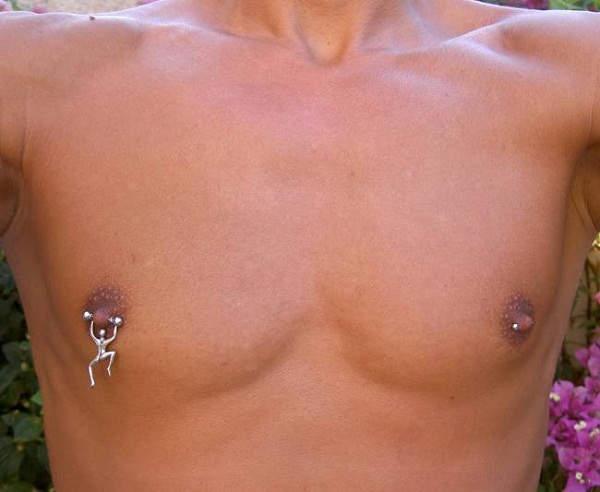

In the late 1890s, the ‘Bosom Ring’ came into fashion briefly; they were sold in expensive Parisian jewellery shops. These ‘Anneux De Sein’ were inserted through the nipple, and some women wore one in each nipple and linked them with a delicate chain. “The rings enlarged the nipples and kept them in a state of constant excitation… the medical community was outraged by these cosmetic procedures, for they represented a rejection of traditional conceptions of the purpose of a woman’s body.” One London socialite detailed her opinion of this fashion craze in an 1890 issue of Vogue:
“For a long time I could not understand why I should consent to such a painful operation without sufficient reason. I soon, however, came to the conclusion that many ladies are ready to bear the passing pain for the sake of love. I found that the breasts of those who wore rings were incomparably rounder and fuller developed than those who did not. My doubts were now at an end…so I had my nipples pierced, and when the wounds were healed, I had rings inserted…with regard to the experience of wearing these rings, I can only say that they are not in the least uncomfortable or painful. On the contrary, the slight rubbing and slipping of the rings causes in me an extremely titillating feeling, and all my colleagues I have spoken to on this subject have confirmed my opinion.” Nipple piercing was also known to be practiced by the Karankawa Indians of Texas, and it is still practiced in the Mountains of Algeria, by women of the nomadic Kabyle tribe. In the west, nipple piercing has made a resurgence, with many famous people having their nipples pierced–for instance, Lenny Kravitz, Jaye Davidson (The Crying Game), Gerry Connelly (Comedian), Tommy Lee (Drummer for Motley Crue & Husband of Baywatch’s Pamela Anderson), and Axl Rose (Guns & Roses).
Benefits of Nipple Piercing: The benefits of nipple piercings are the same today as they were for the fashionable ladies of Paris and London in the 1890s. It makes the nipples larger, more sensitive, and more sexually attractive, and it provides constant stimulation. One man described his nipple piercings as “a light switch for an erection”. Nipple piercing is very effective for increasing the size of small nipples (especially men’s) and can prevent nipples from becoming inverted. In Victorian England, doctors often recommended nipple piercing to increase the size of the nipples and make breastfeeding easier. Plus, nipple piercings can provide greater sexual pleasure by giving your partner something to play with during sex–particularly if touching your nipple piercings heightens your state of arousal, too, further stimulating your partner.
Dermal Piercing
Dermal piercings, also known as micro dermal piercings or single-point piercings, are piercings installed on flat surfaces of the body.
Dermal piercings are different from ordinary body piercings in that the latter have entry and exit points for the jewellery. In dermal piercing, only one end of the ornament emerges from the surface of the skin; the other end is embedded in the dermal layer of the skin. This gives the appearance of having small beads on the surface of the skin.This type of piercing is becoming popular nowadays because it can be placed on almost any flat surface in the body, allowing decoration of areas that are difficult to pierce with regular piercings.In addition, patterns can be made with multiple dermal piercings. A dermal piercing can also attach an ornament to the finger as a “dermal ring.”
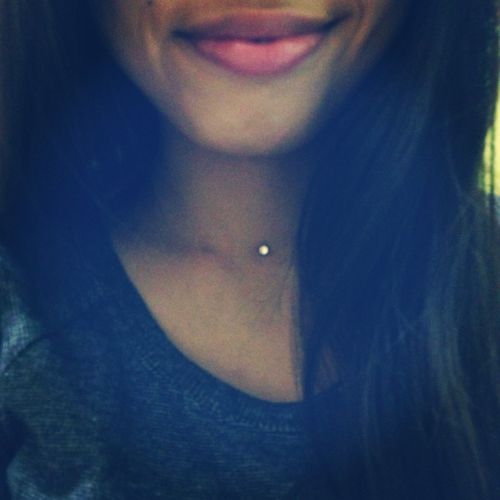
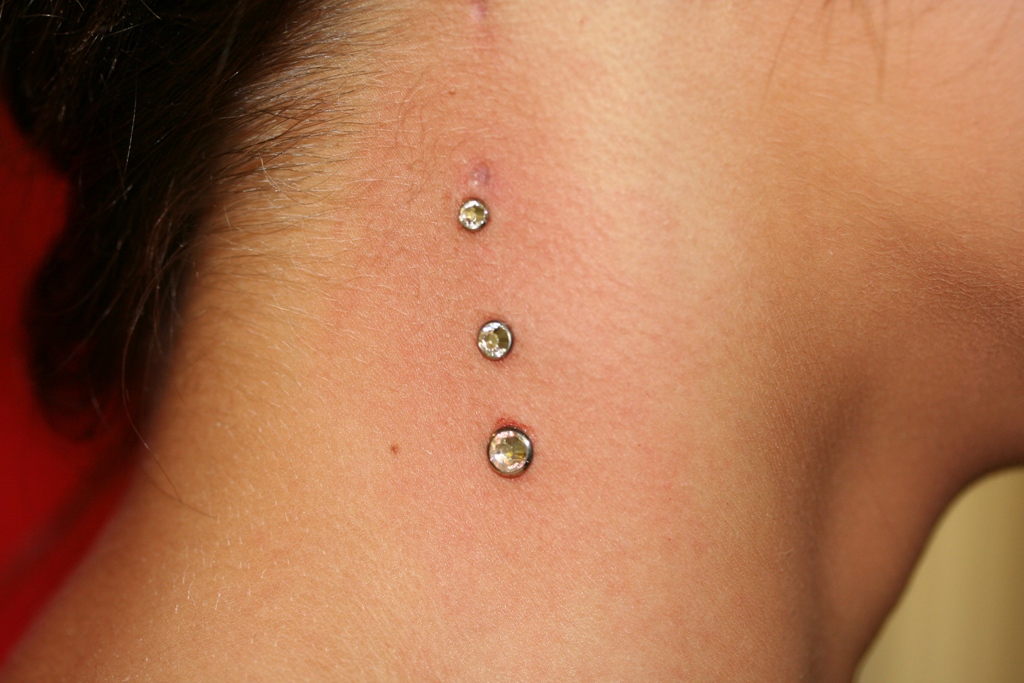
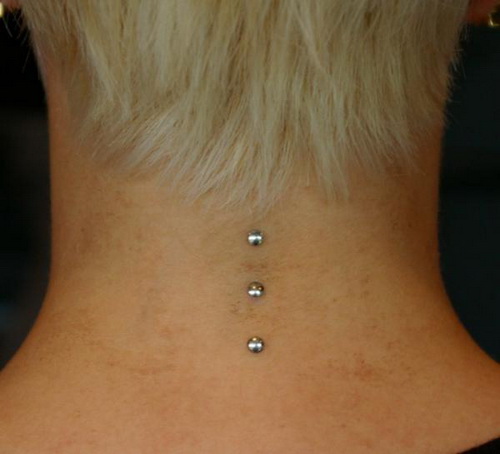
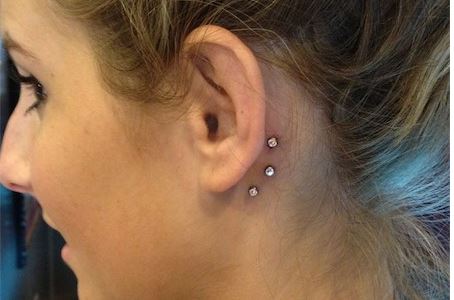



We Are In Era Of Advanced Equipments To Give Best Results
